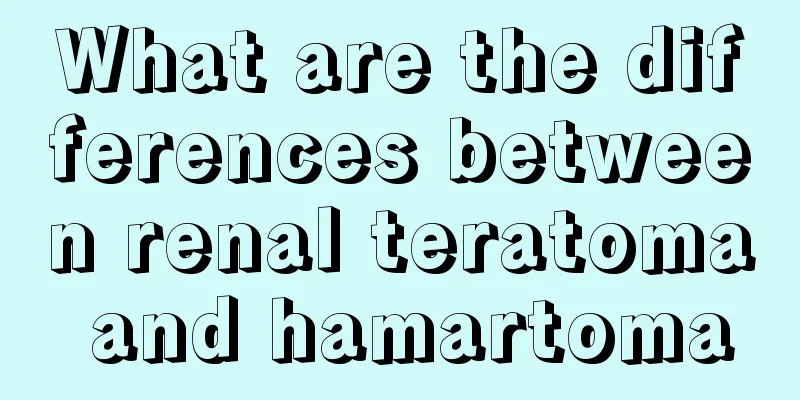What are the differences between renal teratoma and hamartoma

|
Renal teratomas are germ cell tumors arising from ectopic pluripotent stem cells that fail to migrate from the yolk sac endoderm to the urogenital tract during embryogenesis. The difference between hamartomas and normal tissue is that hamartomas grow in a disorganized pattern. Most hamartomas grow slowly at a similar rate to normal tissue. Although they are genetic diseases, they are more common in males than in females. Hamartomas are benign tumors that are made up of abnormal, but not cancerous, cells similar to the tissues they are made of. In some areas of the body, they may not cause any symptoms or even go away with time, while in other areas, they may cause complications. Renal teratomas are rare tumors that can contain mature tissues and organs, including hair, teeth, muscle, and bone. The difference between renal teratoma and hamartoma: 1. Symptoms Hamartomas generally cause no symptoms or discomfort due to pressure on nearby organs and tissues, which can vary depending on the location of the hamartoma. One of the most common "symptoms" is fear, because these tumors can look a lot like cancer when they are found, especially on imaging tests. Renal teratomas may not have any symptoms at first, and when symptoms develop, they may vary depending on the location of the teratoma. Common signs and symptoms of many renal teratomas include: pain, swelling, and bleeding. 2. Diagnostic methods Your doctor may use X-rays, ultrasounds, and CT scans to help diagnose a renal teratoma, and blood tests may also be helpful. The diagnosis of a hamartoma will depend on where it occurs, and since they may look similar to malignancies (cancer) when imaged, a biopsy is often needed to confirm the diagnosis. 3. Treatment options Renal teratomas detected at birth or later are removed surgically, and they must be closely monitored because there is a high chance that they will grow again within three years. If the renal teratoma is malignant, chemotherapy is used at the same time as surgery, and the survival rate is relatively high. Treatment of hamartomas can usually be determined by a combination of imaging tests and fine needle aspiration biopsy, and surgery should be performed for people who have symptoms due to the tumor or for those who still have questions about the diagnosis. Renal teratomas are rare and usually benign. Treatments for cancerous renal teratomas have improved in recent decades so that most cases are curable. A hamartoma is a benign (noncancerous) tumor that does not spread to other parts of the body, but for some people, a hamartoma may signal a genetic mutation that may increase the risk of certain cancers, such as breast and thyroid cancer. |
<<: Drinking too much water can be fatal? 6 tips to prevent bladder cancer
>>: Is renal hamartoma surgery dangerous?
Recommend
It is necessary for people to pay attention to the causes of cardia cancer in a timely manner
In recent years, the incidence of cardia cancer h...
What are the disadvantages of contact lenses
Don’t think that many people have healthy vision ...
What are the early signs of breast cancer? 7 signs of early breast cancer
The incidence of breast cancer is getting higher ...
What to do if your back is red and painful due to sunburn?
Sunburn is a very common phenomenon in life, espe...
What can't you eat if you have uterine cancer
I believe that many people are familiar with endo...
Tips for slimming your legs before going to bed
All beauties want to have a pair of beautiful, we...
Which hospital is good for cervical precancerous lesions
Cervical cancer belongs to the category of vagina...
What is going on when I have diarrhea and vomit?
Diarrhea and vomiting are what we call vomiting a...
Is my grandfather's prostate cancer hereditary?
For prostate cancer, the growing cancer cells wil...
What are the symptoms of early gastric cancer
Gastric cancer is the most threatening type of tu...
What causes black tongue? Is it difficult to treat?
Generally speaking, the phenomenon of black tongu...
A cup of warm water has 6 health benefits
Warm boiled water is boiled water that has cooled...
Can I eat yam if it turns black?
It is very common for food to spoil in people'...
How to choose delicious apples_Which variety of apples is the most delicious
Apple is a very common fruit in life and is very ...
What are the treatments for heart failure
The treatment of heart failure is very important ...









